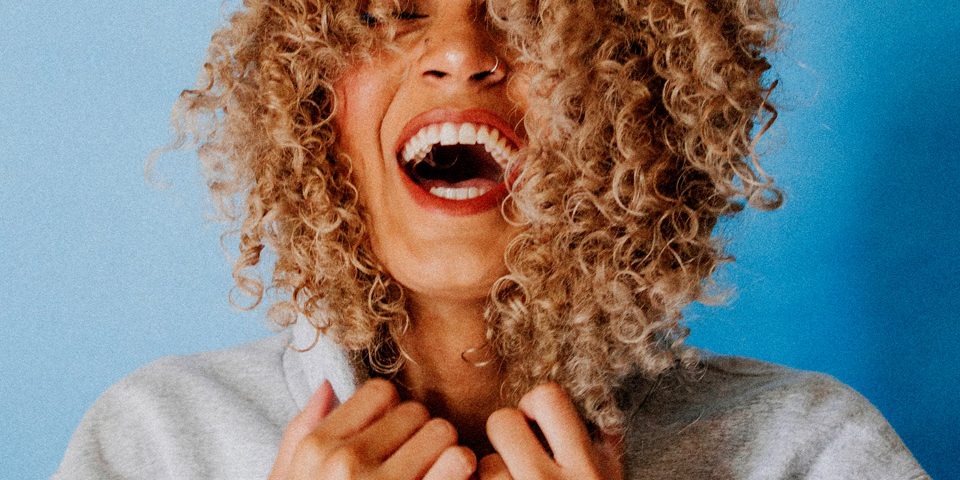
WOMEN WHO LIVE OUT LOUD

BY KAHSHANNA EVANS
6 NOVEMBER 2019
A nation that boasts of equality and routinely equates high-level executives of Latinx heritage with labor-force workers and stay-at-home mothers is still struggling with the urban legend of the monolith

ART IS A LOVE LANGUAGE THAT EVERYONE CAN UNDERSTAND AND FEEL
A nation that boasts of equality and routinely equates high-level executives of Latinx heritage with labor-force workers and stay-at-home mothers is still struggling with the urban legend of the monolith, especially when Latinx women still make a whopping $.58 compared to every white men’s dollar for hourly earnings. Black women make $.65 to white men’s hourly earnings, white women make $.82, and Asian women, who have the lowest wage gap, make $.87. According to AmericanProgress.org, there are also high rates of gender discrimination directed toward those in the LGBTQ and transgender community, who face grim rates of hiring, firing, and fair wages.
While women in the U.S. collectively use Women’s History Month during March each year to challenge the status quo by continuing to lean in on topics of the wage gap, hostility in the workplace, and their ability to grow professionally based on their merits, it makes perfect sense for Black and Latinx women to respectively circle up for Black History Month and National Hispanic Heritage Month for some much needed ho’oponopono.
In the midst of collaborating on a Discovery Lab for National Hispanic Heritage Month in celebration of Latinx women and women of the diaspora who live out loud with purpose, and that also aimed to connect a universal collective, we knew we had to put all of our cultural cards on the table. A question arose early on: Can there be new cross-cultural norms without factoring in multi-cultural women, who are often socially forced to only embrace what they look like for fear of retaliation from their own community? Or, for that matter, women of other cultural backgrounds who constantly fight the good fight of solidarity beyond their comfort zone when it comes to inclusion?
Sponsors to include Beautiful Amore Skincare and Loli Beauty supported an effort to take the dialogue offline with Ebby, who was joined by panelists Debora Balardini, Lorisa Bates, and Gina Di Iorio at a cozy private residence nicknamed Kissing Lions ZenDen. To many guests, who were from local and international cultures such as Argentina, Brazil, Mexico, and Puerto Rico, culture and heritage are not, in fact, monolithic. The topics touched on cross-cultural allyship, parenting, and identity and briefly examined the glass ceiling for professional women of the diaspora based on appearance and heritage versus opportunity IRL (in real life).
Antigua, a New York native, asserted that after several years working as a creative and fashion director for a leading consumer magazine, her dream was to create a magazine that embodied what she describes as luxury for the soul: women owning conscious stillness, strength, presence, breath, and peace of mind.
Bronx native Mariel Mejia, the Dominican founder of Pink Root Products, was among the sponsors. “I think the best way that we as a community have owned our cross-cultural identities is through art, music, writing, etc.… Art is a love language that everyone can understand and feel, which makes it hard to ignore. It allows us into spaces that we usually are not welcome in.”
Vivek Veeamachaneni, otherwise known as Chef Vi and the founder of Saiya’s Empire, readily supported the gathering with a menu inspired by an infusion of Latin and Indian cuisine paired with Flaco Coquito’s Hibiscus Coquito cocktail and Runa’s new clean energy drink made with guayusa (gwhy-you-sa) sustainably harvested in the Amazon who were also sponsors. Chef Vi, having made a lifestyle of forging cross-culture relations through his approach to the culinary arts, was inspired by the opportunity to contribute: “The best way to forge cross-cultural relationships in the workplace is to actually take time out to sit and talk and embrace each other’s culture…embracing our diversities not only brings us closer together…but [it] helps to build an unbreakable foundation that could and should stand as a model for the world.”
Balardini, performer, director, and co-founder of Group.BR, NY’s only Brazilian theater company, who embraces her indigenous-Brazilian and Afro-Brazilian roots, suggests dismantling the belief that we’re all the same when, in fact, we have some similarities and some differences that should be celebrated. “We are all the same when it comes to being human,” Debora explained, “but culturally, we are different from one another, and we need to embrace those differences. If we keep generalizing, we risk disregarding culture and each other. Knowledge and respect for each other’s individuality and cultural differences are what we need to cultivate.”
Our takeaway is this: Melting the ice to forge meaningful cross-cultural relationships will typically take more than Chef Vi’s secret spices, coquito, and Runa. Every time we create allyship, every time we join a meaningful experience, every time we open a door for women in the diaspora beyond celebrated cultural holidays, the crack in the glass ceiling splinters more.
“I THINK THE BEST WAY THAT WE AS A COMMUNITY HAVE OWNED OUR CROSS-CULTURAL IDENTITIES IS THROUGH ART, MUSIC, WRITING, ETC...ART IS A LOVE LANGUAGE THAT EVERYONE CAN UNDERSTAND AND FEEL, WHICH MAKES IT HARD TO IGNORE. IT ALLOWS US INTO SPACES THAT WE USUALLY ARE NOT WELCOME IN.”
In the midst of collaborating on a Discovery Lab for National Hispanic Heritage Month in celebration of Latinx women and women of the diaspora who live out loud with purpose, and that also aimed to connect a universal collective, we knew we had to put all of our cultural cards on the table. A question arose early on: Can there be new cross-cultural norms without factoring in multi-cultural women, who are often socially forced to only embrace what they look like for fear of retaliation from their own community? Or, for that matter, women of other cultural backgrounds who constantly fight the good fight of solidarity beyond their comfort zone when it comes to inclusion?
Sponsors to include Beautiful Amore Skincare and Loli Beauty supported an effort to take the dialogue offline with Ebby, who was joined by panelists Debora Balardini, Lorisa Bates, and Gina Di Iorio at a cozy private residence nicknamed Kissing Lions ZenDen. To many guests, who were from local and international cultures such as Argentina, Brazil, Mexico, and Puerto Rico, culture and heritage are not, in fact, monolithic. The topics touched on cross-cultural allyship, parenting, and identity and briefly examined the glass ceiling for professional women of the diaspora based on appearance and heritage versus opportunity IRL (in real life).
Antigua, a New York native, asserted that after several years working as a creative and fashion director for a leading consumer magazine, her dream was to create a magazine that embodied what she describes as luxury for the soul: women owning conscious stillness, strength, presence, breath, and peace of mind.
Bronx native Mariel Mejia, the Dominican founder of Pink Root Products, was among the sponsors. “I think the best way that we as a community have owned our cross-cultural identities is through art, music, writing, etc.… Art is a love language that everyone can understand and feel, which makes it hard to ignore. It allows us into spaces that we usually are not welcome in.”
Vivek Veeamachaneni, otherwise known as Chef Vi and the founder of Saiya’s Empire, readily supported the gathering with a menu inspired by an infusion of Latin and Indian cuisine paired with Flaco Coquito’s Hibiscus Coquito cocktail and Runa’s new clean energy drink made with guayusa (gwhy-you-sa) sustainably harvested in the Amazon who were also sponsors. Chef Vi, having made a lifestyle of forging cross-culture relations through his approach to the culinary arts, was inspired by the opportunity to contribute: “The best way to forge cross-cultural relationships in the workplace is to actually take time out to sit and talk and embrace each other’s culture…embracing our diversities not only brings us closer together…but [it] helps to build an unbreakable foundation that could and should stand as a model for the world.”
“THE BEST WAY TO FORGE CROSS-CULTURAL RELATIONSHIPS IN THE WORKPLACE IS TO ACTUALLY TAKE TIME OUT TO SIT AND TALK AND EMBRACE EACH OTHER'S CULTURE... EMBRACING OUR DIVERSITIES NOT ONLY BRINGS US CLOSER TOGETHER... BUT [IT] HELPS TO BUILD AN UNBREAKABLE FOUNDATION THAT COULD AND SHOULD STAND AS A MODEL FOR THE WORLD.”
Balardini, performer, director, and co-founder of Group.BR, NY’s only Brazilian theater company, who embraces her indigenous-Brazilian and Afro-Brazilian roots, suggests dismantling the belief that we’re all the same when, in fact, we have some similarities and some differences that should be celebrated. “We are all the same when it comes to being human,” Debora explained, “but culturally, we are different from one another, and we need to embrace those differences. If we keep generalizing, we risk disregarding culture and each other. Knowledge and respect for each other’s individuality and cultural differences are what we need to cultivate.”
Our takeaway is this: Melting the ice to forge meaningful cross-cultural relationships will typically take more than Chef Vi’s secret spices, coquito, and Runa. Every time we create allyship, every time we join a meaningful experience, every time we open a door for women in the diaspora beyond celebrated cultural holidays, the crack in the glass ceiling splinters more.




